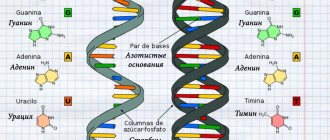This text can be downloaded from this link
The formation of personality leads to the formation of a worldview, which, in turn, arises in the process of cognition. A person, becoming a person, asks himself a series of questions: “Who am I? What is my place in the world? What is the meaning of existence and how does the universe work? The questions listed above are the path to understanding oneself and the surrounding reality, and the answers to these questions are the path to the formation of a person’s worldview, spirituality, and inner world.
Explanation of the term
We are about to talk about a complex but fundamental aspect of consciousness. To do this, we first identify what self-awareness in general is. It can belong to both a specific individual and the entire society (for example, a people), and also consists of several levels:
- Elementary (primary ideas about oneself associated with the assessment of others).
- Deep (more conscious understanding of one’s role in society).
- The most difficult one.
At the third, most complex stage, a person’s worldview is located - this is the totality of knowledge, beliefs and ideas about oneself, society and the world as a whole. With its help, a person realizes himself as a part of material and spiritual reality through a generalized attitude towards it. It reflects the very essence of the individual, his ideas, views, thoughts, values, preferences that influence behavior. There is also the concept of “worldview maturity,” which can be seen by the actions of people.
Forms and factors of worldview formation
It is customary to distinguish three main forms:
- attitude - a person’s impressions of what is happening in life, the complex of his feelings, thoughts, actions and moods. The formation of a worldview begins with it. Sensory awareness is responsible for the formation of images;
- worldview. The concept itself includes the answer: we are talking about the perception of the world, its vision and reflection through the prism of subjective impressions and sensations. The worldview can be hostile or friendly;
- worldview - images formed and fixed in the head about the world around us.
In this same regard, the worldview can be classified according to emotional coloring, dividing into pessimistic and optimistic.
Forming factors
- the social environment in which the person is located;
- the social conditions in which the individual is placed;
- political system.
Structure
World vision includes a complex of various characteristics of the spiritual life of an individual, formed through knowledge and understanding of the world. Attitude outlines emotional and psychological issues at the level of emotions, feelings, and moods.
Worldview determines the cognitive-intellectual sphere. As such, internal attitudes and views arose in the process of humanity’s transition to the tribal community - the first stable form of social organization. This was a big leap in development.
Components of worldview
There are many types of knowledge that a person accumulates in the process of studying the universe. Everyday experience allows you to adapt to life in society and navigate it, scientific experience allows you to analyze facts of a higher rank.
Interaction with the surrounding space is accompanied by an emotional response. We don’t just look at the creations of nature, forming a dry factual idea about them, we admire and even admire them.
Another important aspect of worldview is norms and values. Sometimes they even go against common sense: in order to protect a loved one, a child, many are ready to sacrifice themselves. People act based not so much on emotions or logic, but on their own beliefs and attitudes.
Actions determine the practical level of the ideological structure. You can openly express your attitude towards the world only through specific actions. So, the worldview consists of four main components: emotional, activity, cognitive and value. All of them are interconnected and form the internal integrity of the individual.
Peculiarities
The everyday type of worldview is formed spontaneously throughout a person’s life. It cannot be placed within a certain framework or structured into a system.
Every day a person, in the process of his activities and as a result of observing other people, receives new information that is processed and perceived by him.
In its pure form, everyday thinking could not exist due to its unsystematic nature and some abstractness.
To be sustainable, it needs to combine elements of mythology, religion, and science. This allows you to add the necessary rationality, practicality, and objectivity.
Thus, the emotionally figurative, fantastic perception of reality, which underlies the mythological worldview, often becomes part of everyday views.
Also, objective data obtained as a result of scientific research become an integral part of everyday life.
For example, a person’s everyday ideas about building family relationships can be based on scientific information received from psychological literature, and not just on the experience of previous generations.
The influence of moral principles preached by religion on the formation of everyday views is also great. A person participates in traditional rituals (baptism, funeral, burial service) not only for reasons of common sense and his experience, but also because of the presence of certain religious attitudes.
The borrowing of individual practical components of other types of worldview by the everyday worldview allows us to provide not only an emotional (worldview), but also a rational component (worldview).
A person successfully combines his own feelings obtained as a result of observations and experience with some practical data.
As a result, a set of values, ideals, and models is formed. They help you navigate life and make decisions. The world around us is being organized, becoming understandable and accessible.
The absence of an ordinary worldview would turn a person’s life into complete chaos, in which there would be no clear understanding of goals and paths of development.
The psyche of an individual without everyday attitudes would be in constant tension, since a person would not be able to predict and predict the development of events.
Thus, the everyday worldview, despite a number of shortcomings, plays a big role in the life of every person. Its presence allows an individual to exist safely in society, relying on common sense and existing experience.
2 ways of worldview - ordinary and philosophical:
Our interesting VKontakte group:
What types does science distinguish?
Within the framework of the historical approach, there are three main types of worldview: mythological, religious, philosophical.
Initially, it was mythology that was the foundation on which the value system in society rested. It has become one of the factors determining people's behavior. Mythological presupposes an emotional and imaginative vision of reality and endowing it with fantastic properties. Emotional experience in ancient times prevailed over rational (humanity simply did not have enough of it) and reflected a person’s fear of the unknown, unusual, and unfamiliar. The inability to correctly build cause-and-effect relationships gave rise to the need to explain natural and social phenomena by turning to science fiction.
When primitiveness as a principle for building life faded into the background, religion replaced myth. Unlike mythology, it brought with it dogmatism, a clearly formulated system of values and rules. Examples of “right” and “wrong”, “good” and “bad”, “permissible” and “inadmissible” appeared. Now the deepest questions of human existence (about origin, birth and death) sought their resolution in belief in the supernatural.
Later, philosophy emerges, designed to structure and systematize different views on the world, society and man. Reason, consistency of thought, logic, and argumentation come to the fore. All three types appear in modern reality. They are reflected in how we relate to certain aspects of existence and relationships.
Choosing the right goal, according to the type of worldview
Many concepts from the listed types are firmly woven into our consciousness.
Some examples - then and now.
Archaic type: before - open worship of idols (all living things), now - baubles, beads, talismans... bringing good luck, the concept of many new people is “the living universe”...
Mythological type of worldview: earlier - worship of the pantheon of gods: Zeus, Veles, Iris..., now - from challing (receiving sacred knowledge from unearthly forms of being) to the influence of stars, the concepts of fate and karma, implicit and subtle worlds.
If a person fails, he cannot achieve success, here is the answer why this happens: the choice of goal is not from one’s own type of worldview.
The fact is that changing your vision of the world is quite difficult, but choosing the right one that corresponds to the type of worldview is quite simple. Only your own goal will bring success! From other people's goals, not your own, you will only be unhappy...
Good luck to you and choosing the right goals!
Scientific worldview
Unlike all other types, this one is based on objective knowledge about nature and man. This is a kind of highest stage in the development of philosophical thought, but with less generalization and more accuracy. This way of seeing the world is based solely on the achievements of science and human knowledge, which make it possible to create an objective image of reality, to explain the essence of personality and its role in the formation and development of existing reality. Advantages:
- reliance on the latest discoveries;
- connection with the real essence of things;
- practical orientation, direct influence on people’s activities.
Flaws:
- indifference to meanings and the spiritual sphere;
- the interests of a person and the desire to improve his situation do not play a big role.
Definition of the concept
Worldview is usually understood as a holistic system of views on nature, society and man, the surrounding reality and the place of man himself in this system. Worldview is expressed through a system of values, through the ideals of a particular individual and a particular social group. The structure of the worldview is multi-layered.
Structural components of worldview
- knowledge;
- spiritual ideals;
- beliefs and principles;
- life values.
Worldview is formed more than once and for a lifetime in two ways:
- spontaneous;
- conscious.
Its formation occurs throughout the entire time that a person is alive. This is partly the result of upbringing, partly - one’s own life experience. The older a person is, the more conscious his worldview is.
In addition, scientists divide worldview into several forms.
Religious worldview
Divides the world into two poles: “this” and “that”. Introduces concepts such as spirit, faith, God and does not require evidence or critical analysis. Establishes postulates that answer deep-seated questions that trouble a person: what is good and what is evil, what is the concept of the creation of the Universe. Religiosity presupposes adherence to strict rules of behavior, which are presented by the bearers of one or another teaching as truly true. Religion plays a colossal, albeit controversial, role in modern times. It is inextricably linked with universal human culture and is focused on solving spiritual problems. At the same time, it comes into conflict with other types of worldview.
Religion and us
Historians are convinced that the defining feature of a religious worldview is the prevention of social tension in a class society.
With the emergence of social and material inequality, it became necessary to create a system in order to prevent social riots, coups, and any mass disturbances. This is connected with the imposition of a religious worldview, which has taken over the baton of primacy from mythology.
The religious worldview is more progressive than the mythological one, since a person with it is more free. In Christianity, for example, the concept of free will is clearly expressed. This is confirmed by the fact that the religious worldview preaches the theory that God controls our lives, but we ourselves are responsible for our destiny.
The religious worldview understands the figure of the deity somewhat differently. In mythology, Gods are corporeal beings with all their sins, and in any religion God appears as a supernatural, perfect and non-corporeal being.
The main features of the religious worldview are the division into the otherworldly and the real world, the fact that the Gods are considered as the highest moral beings, whom the religious worldview calls to be equal to, and a certain freedom of human choice.
No matter how many analysts claim that an ever smaller number of humanity is susceptible to this type of worldview, that the religious worldview has to gradually retreat from its leading position in modern times, nevertheless, the number of believers is steadily growing.
Mythological worldview
It was formed at a historical stage when humanity gradually separated itself from nature and opposed it. Various cults and pantheons arose. Complex phenomena of social life were reflected in myths: like people, gods and heroes staged wars and competed with each other. Properties of mythology:
- endowing nature with human traits;
- interaction of the real with the fantastic;
- lack of logical analysis and reflection;
- practical focus on solving everyday problems;
- The plots are of the same type and superficial.
Archaic subtype
This is an ancient form of human ideas about himself, life and interaction with nature. It is characterized by the coexistence of reality and fantasy. Both of these concepts were once united in various variations of beliefs: totemism, animism, fetishism. In the same way, within the framework of this worldview there is no division into “I” and the world. Everything around has vital energy and requires a certain attitude (rituals, worship).
Types of worldview, historical and social
They were formed in chronological order. It is very good to understand what the difference is - knowing the history of all mankind. From the Stone Age to the present day. Each period of time reflected the principles that lay in each of these types of worldview.
Another interesting fact: humanity developed - and its thinking developed, its worldview changed. And exactly the same thing happens with the development of a child. That is, in essence, every person, growing up, develops his own worldview by choosing appropriate goals.
Archaic type of worldview
This is humanity’s earliest understanding of the world, of man himself in it.
It is characterized by the fact that realism and fantasy are not separated from each other. These two concepts merged in the form of early beliefs: animism, fetishism, totheism. There is no clear division from your “I” and the world around you. As such an understanding, “Soul” does not exist at all. At the same time: all living things are endowed with life, like humans: from stone to the sun.
Life goals are not formed consciously: it is to please oneself and other animate beings (sacrifice, rituals, idols ....)
Mythological type of worldview
At this point in history, there is a clear separation of “oneself” from the world around us. And if there is an “I,” then there is a “He,” whose actions and thoughts may not coincide with mine. From such views, confrontation (confrontation) already occurs.
This is the era of cults and pantheons of gods. Just as life itself is full of confrontation and competition for a place in the sun, so myths are born about exactly the same confrontation between the gods.
Life goals are already acquiring a clearer structure and meaning: to be with the Powerful Ones of this world, to have power... to achieve the favor of a certain god or person...
Religious
An even greater division of the world. That there is this world and that world. The concepts of soul, spirit and body appear. To God is God, to Caesar what is Caesar's.
The concept of faith appears - in the invisible, without critical analysis of the latter. Ideas common to all religions: about God’s creation of the world, about the concepts of good and evil, about the consequences of not following certain rules of behavior.
Life goals - according to the concept of faith that a person professes - are “correct” in its understanding of actions and thoughts.
Philosophical type of worldview
With an increase in knowledge about the person himself and the world around him, a collapse occurs (critical mass), when this knowledge needs to be rethought. This is how various schools of philosophy are formed.
If the knowledge is reinterpreted in the context of such a school, then they believe that the philosophy is the same, but is developing... If the contradictions with the old school are obvious, a new philosophical movement is formed.
Life goals in this context are personal growth, self-development, self-actualization, search for truth...
What worldviews do people have: philosophical direction
There is a huge amount of knowledge and ideas concerning the role and place of human culture, personality in the universe, as well as issues of life and death in general. Philosophy has undertaken to rethink all existing ideas about reality and highlight the most significant topics for discussion. In the process of historical development, many different schools arose (and still appear), many of which ideologically conflict with each other. Philosophers consider self-knowledge, the search for truth, and self-actualization to be the highest values. Differences from religion and myth:
- based on rational knowledge, not faith;
- reflection plays a dominant role;
- presence of integrity, system;
- clear concepts and categories.
Question 1: worldview, its structure and functions
Home Favorites Random article Educational New additions Feedback FAQPage 1 of 5Next ⇒
Question 1: worldview, its structure and functions
Worldview is a system of a person’s stable views on the world and his place in it. The broad meaning is all views, the narrow meaning is objective (within the corresponding form of worldview: mythology, religion, science, etc.). The term “worldview” supposedly appeared in the 18th century and has been popular since the 19th century.
Features of a worldview: active knowledge (position-action), integrity, universality (implies the presence of one or another worldview in every person).
The subject is relationships in the world-person .
The structure of a worldview – elements and connections between them. Levels of worldview structure:
- everyday-practical (“attitude”, “emotionally colored vision of the world”, “everyday worldview” of each person);
— rational-theoretical (“worldview”, “intellectual worldview”, uses concepts, categories, theories, concepts).
Structural elements: knowledge , values , ideals, action programs, beliefs (by which the authors mean not “firm principles”, but “accepted” - “knowledge and values” more or less approved by scientists), etc.
Functions of worldview : 1) axiological (value) and 2) orientation .
Historical types of worldview:
- mythological worldview (fantasies predominate, unity with nature, anthropomorphism, many supernatural forces, dominance of feelings);
- religious worldview (monotheism): psychological structure (feelings and actions of people, rituals) + ideological structure (dogmas, scriptures): the world is doubled (meaning, first of all, the Christian worlds of this and other worlds), God is spiritual, He is the creator outside world, Holy Scripture is the source of knowledge, hierarchy descending from God;
- philosophical worldview (free intellectual search for truth): understanding the ultimate foundations of being and thinking, justification of values, striving for integrity, logical argumentation), reliance on reason.
ADDENDUM: The above answer is quite suitable for answering question No. 1 of the Approximate list of questions for the entrance exam to graduate school at the Belarusian State University: “Worldview, its essence, structure and historical types.”
Question. 2 historical types of worldview levels and structure
Worldview structure
Worldview is a synthesis of various features of a person’s spiritual life; This is a person’s knowledge and experience of the world. The emotional and psychological side of the worldview at the level of moods and feelings is the worldview. For example, some people have an optimistic outlook, others have a pessimistic one. The cognitive-intellectual side of the worldview is a worldview.
Worldview, like the whole life of people in society, has a historical character. The emergence of a worldview is associated with the process of formation of the first stable form of human community - the tribal community. Its appearance became a kind of revolution in the spiritual development of man. Worldview distinguished man from the animal world. The history of the spiritual development of mankind knows several basic types of worldview. These include mythological, religious, philosophical worldview.
Historically, the first stage in the development of a worldview was the mythological worldview. Mythology consolidated the system of values accepted in society, supported and encouraged certain forms of behavior. With the extinction of primitive forms of social life, myth became obsolete and ceased to be the dominant type of worldview.
The fundamental questions of every worldview (the origin of the world, man, the mystery of birth and death, etc.) continued to be resolved, but in other ideological forms, for example, in the forms of a religious worldview based on belief in the existence of supernatural beings and a supernatural world, and a philosophical worldview that exists as a theoretically formulated system of the most general views on the world, man and their relationships.
Each historical type of worldview has material, social and theoretical-cognitive prerequisites. It represents a relatively holistic ideological reflection of the world, determined by the level of development of society. The features of various historical types of worldviews are preserved in the mass consciousness of modern people.
Worldview is a complex, synthetic, integral formation of public and individual consciousness. Essential for its characteristics is the proportional presence of various components - knowledge, convictions, beliefs, moods, aspirations, hopes, values, norms, ideals, etc. In the structure of the worldview, four main components can be distinguished:
1. Cognitive component. It is based on generalized knowledge - everyday, professional, scientific, etc. It represents a specific scientific and universal picture of the world, systematizing and generalizing the results of individual and social knowledge, the thinking styles of a particular community, people or era.
2. Value-normative component. Value is the ability of some object or phenomenon to satisfy the needs and desires of people. The human value system includes ideas about good and evil, happiness and unhappiness, purpose and meaning of life. A person’s value attitude towards the world and towards himself is formed into a certain hierarchy of values, at the top of which are the absolute values fixed in social ideals. The consequence of a person’s stable, repeated assessment of his relationships with other people are social norms: moral, religious, legal, etc. that regulate the daily life of both an individual and the entire society. In them, to a greater extent than in values, there is a commanding, obliging element, a requirement to act in a certain way. Norms are the means that bring together what is valuable for a person with his practical behavior.
3. Emotional-volitional component. In order for knowledge, values and norms to be realized in practical actions and actions, it is necessary to assimilate them emotionally and volitionally, transform them into personal views, convictions, and also develop a certain psychological attitude towards readiness to act. The formation of this attitude is carried out in the emotional-volitional component of the worldview component.
4. Practical component.
Worldview is also a person’s real readiness for a certain type of behavior in specific circumstances. Even if this worldview orients a person not towards participation in life, but towards a contemplative position, it still projects a certain type of behavior. Based on the above, we can define a worldview as a set of views, assessments, norms and attitudes that determine a person’s attitude to the world and act as guidelines and regulators of his behavior. Question.
3 The main question of philosophy and its 2 sides The question of the relationship between matter and consciousness, i.e. essentially about the relationship of the world
and man is the fundamental question of philosophy. The main question has 2 of its own
sides.
1. What comes first, consciousness or matter?
2. How do our thoughts about the world relate to this world itself, i.e. do we know the world?
From the point of view of revealing the 1st side of the main question of philosophy in the system
General philosophical knowledge is distinguished by the following areas: a) materialism; b)
idealism; c) dualism.
Materialism is a philosophical movement that asserts the primacy of matter and
secondary consciousness. Idealism is a philosophical movement that asserts
the opposite of materialism. Dualism is a philosophical school that argues that
matter and consciousness develop independently of each other and go in parallel.
(Dualism did not stand up to the criticism of time) Variations of Materialism and Idealism
(Forms of materialism and idealism)
1. Naive materialism of the ancients (Heraclitus, Thales, Anaximenes, Democritus) Essence:
Matter is primary.
This matter meant material states and physical
phenomena that, upon simple observation, were found to be global, without
attempts at scientific substantiation, simply as a result of ordinary observation of
environment at the level of naive explanation. They claimed that massively
what exists around people is the origin of everything. (Heraclitus - fire, Thales -
water, Anaximenes - air, Democritus - atoms and emptiness.)
2. Metaphysical - matter is primary to consciousness. Specificity of consciousness
was ignored. The extreme version of metaphysical materialism is vulgar.
“The human brain secretes thoughts the same way the liver secretes bile.”
Metaphysical materialists of the late 18th century - Diderot, Mametrie, Helvetsky.
3. Dialectical materialism (Marx and Engels)
Essence: Matter is primary, consciousness is secondary, but the primacy of matter is
relation to consciousness is limited by the framework of the main philosophical question.
Consciousness is derived from matter, but, having arisen in matter, in turn
can significantly influence and transform it, i.e. between matter and
consciousness there is a dialectical relationship.
Types of Idealism:
1. Objective - independent of human consciousness.
The essence: the primary idea of consciousness, which is objective: Plato - the world and the day, the idea,
memory. Hegel is an absolute idea.
2. Subjective idealism (Berkeley, Mach, Hume). Essence: The world is a complex of my sensations.
Philosophy of Socrates
SOCRATES. 469 –399 BC e. Born into a poor Athenian family - a stonemason. A supporter of the Athenian aristocracy. An opponent of the Sophists, he criticized politicians for their unsuccessful struggle against Sparta. The court declared him disrespectful of the Gods for criticizing the selection of officials by drawing lots. Sentenced to death. Socrates believed that the structure of the world, physics. the nature of things is unknowable; we can only know ourselves (“Know thyself”). The highest task of knowledge is not theoretical, but practical. - ability to live. He used the following methods: question-and-answer, induction, maeutics (a form of conversation in which the ability to conduct a dialogue meant the ability to ask leading questions), irony. He considered the main task in philosophy to be the rational justification of a moral and religious worldview, and the study of nature was fundamentally impossible. He considered the soul principle to be the basis of the world. The most important task is to know oneself and emphasize the importance of conscience. Conscience is of divine origin. The gods use it to distinguish man from animals. The goal of everything in the world is man. For Socrates, morality merges with consciousness. True morality is the knowledge of what is good, beautiful and at the same time useful for a person. It helps to achieve bliss and happiness in life. Basic virtues: 1. Restraint (how to tame passions)2. Courage (how to overcome danger)3. Justice (how to observe divine and human laws)
Socrates (469–399 BC) did not write anything, was a sage close to the people, philosophized in the streets and squares, entered into philosophical disputes everywhere: we are known as one of the founders of dialectics in the sense of finding truth through conversations and disputes ; developed the principles of rationalism in matters of ethics, arguing that virtue comes from knowledge and a person who knows what good is will not act badly.
Philosophy of the era of scholasticism
Scholasticism (from the Latin schola - school) arises as a rationalization of Christian doctrine. The goal of scholasticism is to streamline dogmatics and make it easy to understand for “simple people” (illiterate people). Philosophy was recognized as the main means of streamlining Christian dogma for the following reasons:
• with the help of reason it is easier to penetrate the truths of faith;
• using philosophical arguments, you can avoid criticism of holy truths;
• with the help of philosophy, it is possible to give religious truths a systematic form and create a completely demonstrative system of philosophical doctrine.
The ancient sources of scholastic thought are the Neoplatonic tradition, Augustine, Boethius. Later, the “rediscovered”, newly read works of Aristotle became normative.
Early scholasticism is associated with a revival of interest in knowledge. Thinking at this time was characterized by greater independence in posing questions.
Among the main problems of early scholasticism were the following:
• relations of faith and knowledge;
• the problem of universals;
• coordination of Aristotelian logic and other forms of knowledge;
• coordination of mysticism and religious experience.
The most famous thinker of early scholasticism is Anselm , Archbishop of Canterbury (1033-1109). According to Anselm, true thinking cannot contradict faith. The truths of faith are justified by natural reason. Faith, however, must precede reason. Anselm has an ontological proof of the existence of God .
Interest in the work of Boethius sparked the debate about universals . Do universal definitions, i.e. genera and species, correspond to reality in itself or do they exist only in thinking? This dispute led to the spread of the scholastic method and became the main topic of philosophizing for several centuries. Ultimately, three points of view were expressed in the discussion:
• extreme realism , which argued (thus continuing Plato's line of philosophizing) that universals, i.e. genera and species, exist before things, as real entities;
• extreme nominalism (from the Latin nomen - name), which insisted (going back to the Stoic tradition) that the genera and ides exist after things, as common names;
• moderate realism , which was based on the Aristotelian tradition - genera and species exist in the things themselves.
The rise of scholasticism (13th century) is associated with the emergence of universities. The creation and development of these higher educational institutions and the existence of qualified teachers led to the appearance of large systematic works.
The image of high scholasticism is formed by the reception (borrowing and adaptation) of Aristotle’s works, which occurred thanks to a new acquaintance with his texts through translations from Arabic, and then directly from Greek. The works of Aristotle, together with Arabic works about the philosopher himself, as well as commentaries on his works, are included in university circulation. The Arab Neoplatonic reception of Aristotle himself and the Neoplatonist provisions of the works attributed to Aristotle led to a pantheistic perception of the scientist. Church authorities opposed this understanding of Aristotle, even to the point of prohibiting reading and commenting on his works. But no thinker could do without the founder of new knowledge, Aristotle. Thus, the development of high scholasticism about. In this dispute, members of the Catholic orders , Augustian-oriented Franciscans Dominicans . In addition, in the scholastic tradition, the development of Neoplatonic, natural science and logical directions should be noted.
Merged together, Aristotelianism, Neoplatonism and Augustianism became the basis of the teachings of the great taxonomist of the Middle Ages, Thomas Aquinas (1225-1274), who made an influential attempt to streamline the connection between Aristotelianism and Christian philosophy.
Thomas gave his own answer to the question of the relationship between faith and reason. Faith and reason cannot contradict each other, since both come from God. Theology (theology) and philosophy cannot come to different conclusions. They differ, however, in their approaches: philosophy goes to God from created things, theology from God to the created world. God's revelation communicates to people only those truths that are necessary for their salvation. Consequently, there remains room for independent exploration of things that are not explained by revelation. Philosophy masters this space, providing and defending the foundations of faith.
The main idea of Thomistic (from the Latin Thomas - Thomas) ontology is the complete order of all being . Every being is given by God its position and its purpose in the order of being is determined. Everything created is characterized by a difference of being and essence. Only in God does his being coincide with his essence.
The era of late scholasticism can be described as the era of the decline of medieval philosophizing. Nominalism criticized the metaphysical systems of the old schools, but did not provide new ideas. In the debate about the nature of general concepts, the old schools defended the position of moderate realism. They were represented by both the late Thomists (followers of the teachings of Thomas Aquinas) and the school of Johann Duns Scotus (c. 1266-1308). Nominalism came to the idea of removing the synthesis of faith and knowledge. The English philosopher and ecclesiastical-political writer William of Ockham (c. 1285-1349) suggested that the subject of real sciences is not the things themselves, but the terms of propositions as representatives of things.
The development of nominalism was accompanied by the flourishing of natural science, especially in Paris and Oxford. In addition, it should be noted that the development of scholasticism does not stop there. Despite the fact that modern European scholasticism increasingly lost the continuity of tradition, it continued to be developed during the 16th and 17th centuries, especially in Spain and Italy, as a reaction to the Reformation and the Renaissance. In the 19th century so-called neoscholasticism .
Question. 11. Main directions and characteristic features of Renaissance philosophy
1. General concept and premises of Renaissance philosophy.
The philosophy of the Renaissance is a set of philosophical trends that arose and developed in Europe in the 14th – 17th centuries, which were united by an anti-church and anti-scholastic orientation, a focus on man, faith in his great physical and spiritual potential, life-affirming and optimistic character.
The prerequisites for the emergence of Renaissance philosophy and culture were:
improvement of tools and production relations;
crisis of feudalism;
development of crafts and trade;
strengthening cities, turning them into trade, craft, military, cultural and political centers, independent of feudal lords and the Church;
strengthening, centralization of European states, strengthening of secular power;
the emergence of the first parliaments;
lag behind life, crisis of the Church and scholastic (church) philosophy;
increasing the level of education in Europe as a whole;
great geographical discoveries (Columba, Vasco da Gama, Magellan);
scientific and technical discoveries (invention of gunpowder, firearms, machine tools, blast furnaces, microscope, telescope, printing, discoveries in the field of medicine and astronomy, other scientific and technical achievements).
2. The main directions of philosophy of the Renaissance.
The main directions of philosophy of the Renaissance were:
humanistic (XIV - XV centuries, representatives: Dante Alighieri, Francesco Petrarca, Lorenzo Valli, etc.) - put the person in the center of attention, glorified his dignity, greatness and power, ironized the dogmas of the Church;
Neoplatonic (mid-15th - 16th centuries), whose representatives - Nicholas of Cusa, Pico della Mirandola, Paracelsus and others - developed the teachings of Plato, tried to understand nature, the Cosmos and man from the point of view of idealism;
natural philosophy (XVI - early XVII centuries), to which Nicolaus Copernicus, Giordano Bruno, Galileo Galilei and others belonged, who tried to debunk a number of provisions of the teachings of the Church and God, the Universe, Cosmos and the foundations of the universe, relying on astronomical and scientific discoveries;
reformation (XVI - XVII centuries), whose representatives - Martin Luther, Thomas Montzer, John Calvin, John Usenleaf, Erasmus of Rotterdam and others - sought to radically revise church ideology and the relationship between believers and the Church;
political (XV - XVI centuries, Nicolo Machiavelli) - studied the problems of government, the behavior of rulers;
utopian-socialist (XV - XVII centuries, representatives - Thomas More, Tommaso Campanella, etc.) - looked for ideal-fantastic forms of building a society and state, based on the absence of private property and universal equalization, total regulation by state power.
3. Characteristic features of Renaissance philosophy include:
anthropocentrism and humanism - the predominance of interest in man, belief in his limitless capabilities and dignity;
opposition to the Church and church ideology (that is, the denial not of religion itself, of God, but of an organization that has made itself a mediator between God and believers, as well as a frozen dogmatic philosophy serving the interests of the Church - scholasticism);
moving the main interest from the form of the idea to its content;
a fundamentally new, scientific-materialistic understanding of the surrounding world (spherical, not flat, Earth, rotation of the Earth around the Sun, and not vice versa, infinity of the Universe, new anatomical knowledge, etc.);
great interest in social problems, society and the state;
the triumph of individualism;
widespread dissemination of the idea of social equality.
Question 1: worldview, its structure and functions
Worldview is a system of a person’s stable views on the world and his place in it. The broad meaning is all views, the narrow meaning is objective (within the corresponding form of worldview: mythology, religion, science, etc.). The term “worldview” supposedly appeared in the 18th century and has been popular since the 19th century.
Features of a worldview: active knowledge (position-action), integrity, universality (implies the presence of one or another worldview in every person).
The subject is relationships in the world-person .
The structure of a worldview – elements and connections between them. Levels of worldview structure:
- everyday-practical (“attitude”, “emotionally colored vision of the world”, “everyday worldview” of each person);
— rational-theoretical (“worldview”, “intellectual worldview”, uses concepts, categories, theories, concepts).
Structural elements: knowledge , values , ideals, action programs, beliefs (by which the authors mean not “firm principles”, but “accepted” - “knowledge and values” more or less approved by scientists), etc.
Functions of worldview : 1) axiological (value) and 2) orientation .
Historical types of worldview:
- mythological worldview (fantasies predominate, unity with nature, anthropomorphism, many supernatural forces, dominance of feelings);
- religious worldview (monotheism): psychological structure (feelings and actions of people, rituals) + ideological structure (dogmas, scriptures): the world is doubled (meaning, first of all, the Christian worlds of this and other worlds), God is spiritual, He is the creator outside world, Holy Scripture is the source of knowledge, hierarchy descending from God;
- philosophical worldview (free intellectual search for truth): understanding the ultimate foundations of being and thinking, justification of values, striving for integrity, logical argumentation), reliance on reason.
ADDENDUM: The above answer is quite suitable for answering question No. 1 of the Approximate list of questions for the entrance exam to graduate school at the Belarusian State University: “Worldview, its essence, structure and historical types.”
1Next ⇒
Everyday worldview
It is based on everyday experience and is formed spontaneously, in the process of interaction of the individual with various spheres and manifestations of life. Attitudes formed by everyday thinking are autonomous and self-sufficient. Often they are accompanied by an exclusively associative way of perception, which is based on the knowledge and practice of ancestors or others. Moreover, new information within the framework of this worldview has the ability to be integrated and applied in various fields of activity. Intuition, emotions and feelings, and instincts play an important role. Also, views and beliefs are perceived in connection with value guidelines and norms of behavior that exist in the social system.
Characteristics and signs
The characteristic features include the following:
- Integrity. All concepts and attitudes that form a person’s everyday thinking are autonomous and self-sufficient. Any type of experience or knowledge is included in a separate sphere of human life, which has its own patterns and rules. Thus, raising offspring belongs to the system of family values, and the ability to do housework belongs to the system of housekeeping. These systems are not directly connected to each other; each can exist separately from the other without losing its integrity and self-sufficiency.
- Associative thinking.
Perceiving the experience of his ancestors and other members of society, a person acts associatively. Finding himself in situations that he had previously observed in the example of other people, the individual already knows in advance what steps he should take. - Knowledge connection. By gaining knowledge about different systems, a person can combine them and successfully integrate them. Thus, communication skills can be successfully used in family, friendships, and professional relationships.
A combination of sensations and experiences. Everyday worldview is formed on the basis of not only everyday experience, but also sensations. Intuition, emotional sensitivity, a sense of self-preservation and other sensations inherent in a person help him in the formation of everyday perception.
Fragmentation. All the knowledge that makes up a person’s daily worldview is perceived by him in fragments. Most people perceive only necessary and interesting information from each knowledge system, since it is impossible to comprehend everything.
Eclecticism. The diversity of views in society on the same things leads to the fact that people's everyday worldviews vary greatly. Family values, norms of behavior, communication patterns and other components of everyday thinking are presented in great diversity.
Each individual chooses the option that best suits his views.
Unsystematic. The everyday worldview is largely based on abstractions. Specific methods and systems are unacceptable in this case.
What kind of worldview does a person have: exponential-personal representation
According to this concept, the way of thinking is formed as an individual grows. When he moves from a passive, dependent state to teenage reflection, crisis. Then and further he feels the full weight of social and cultural influence. Thus, the foundation of worldview is made up of many ideological types: faith is intertwined with myth, philosophy, everyday way of thinking and science in various proportions.
Dogmatism
Often the worldview is formed through a dogmatic way of perception. It presupposes uncritical but conscious adherence to externally established rules, norms, and laws.
Reflexivity
Another “style” of adherence to certain ideas or dogmas is a subconscious, unconscious desire for them. In this case (unlike dogma), reason is no longer included in analytical activity and reflection, therefore submission to certain principles and regulations occurs impulsively, reflexively.
Ask a question
What can be the role of worldview in a person’s life?
- It is the basis of personal integrity, which presupposes the presence of a clear system of values and ideals.
- Structures the surrounding space, making it familiar, more understandable and safe.
- Suggests certain ways to achieve goals.
- Its absence makes life chaotic and the psyche unbalanced, full of contradictory attitudes, which leads to insoluble internal conflicts.
There is a state when the old worldview is destroyed (for example, disappointment in religious principles sets in), and a new one has not yet been formed in its place. This stage is called an ideological crisis. At this moment, it is extremely important to return the personality to integrity as soon as possible, otherwise healthy forms of worldview will be replaced by various delusions and surrogates: alcohol and drugs, sectarianism, and so on. The concept of “mentality” is also associated with worldview, which means a certain mindset, a set of mental properties and behavioral characteristics. It reflects the character of an entire group of people (for example, a nation), representing the inner world of an individual, passed through the prism of historical experience.
How to change your beliefs.
To begin, I will break down this form of thinking into two levels:
- sensual (empirical) – includes attitude, worldview, world experience;
- conceptual (theoretical) – worldview.
The easiest way is to turn the way of thinking in the other direction, working with the second stage, since it is associated with intellectual, logical perception. To do this, you need to directly influence the intellect, forming new attitudes. I recommend step-by-step instructions for changing your beliefs:
- Take some time for yourself and think it through, admit to yourself your conviction in the area that does not suit you, and write it down in a notebook. From the created list, try to choose those that interfere with you and lead to a conflict between your goals and desires (“Everyone gets sick all the time”; “I often catch a virus”; “I have a very weak immune system”; “When I’m sick, everyone loves me”) ; “When I am sick, I rest and gain strength”; “Sick people receive increased attention and care”).
- You yourself must solve your life difficulty, since it is not outside, but deep inside. If you change your negative beliefs to positive ones in the subconscious, you will change your reality.
- Feel your strength and what you are capable of. Remember some negative thought and replace it with the opposite one, try repeating it for literally 2-3 minutes every morning for 3 weeks.
- Do not try to immediately change all your persuasiveness, without overloading yourself, do it gradually. As soon as you have changed 2-4 thoughts, wait a while, let them take root and become fixed in your consciousness.
Choosing the right goal, according to the type of worldview
Find out which type of worldview prevails in you. What do you primarily rely on when talking about good and evil, the creation of the world, and the role of man in it?
- Give reasons for your position.
- Watch. Study reality, analyze, reflect, learn to draw competent conclusions. Experiment. Organize information by recording it. This way you will understand which path is most suitable for you.
- Do some self-reflection. Understand what role you play in society, decide on your desires.
- Reflect. Ask yourself deep questions and look for objective, logically provable answers.
- Put personal experience aside. Do not follow the stereotypes and paradigms formed in the psyche. Do not project a particular case onto general ideas about the world.
- Follow the presence rule. Realize that there is no past and future. There is only the present moment. Live and feel “here and now”; this is the only way your understanding of reality will not be distorted.
- Give up attachments. Perceive your own personality as basic and fundamental. You don't have to live up to other people's ideas and expectations.
- Explore different approaches: science, philosophy, art, the workings of everyday thinking. Look for answers not only within yourself, but also in different sources.
- Develop your analytical skills. Logic will help separate the true from the false.
Why is it important to have a clear worldview?
Is it really important to talk about worldview, to know and understand its structure, types, etc.? Certainly. Worldview is like the interface of a program through which you evaluate the elements of the environment, their functional connections, and try to take your place among these elements. The more colorful and pleasant the interface, the more you like the program.
Worldview forms a set of values, ideals, life principles of a person, and all this taken together sets the rules by which you play, influences the goals and guidelines that guide you in your daily practice. If you think that biology is boring, and music is fraught with many secrets and mysteries that you are interested in solving, then this will most likely determine your specialty, your circle of friends, to some extent your appearance, vocabulary, manner of communication and much more. That is, worldview directly affects our lives.
If you still have any questions, you can watch a short but informative video about what alignment is and what its role is:










